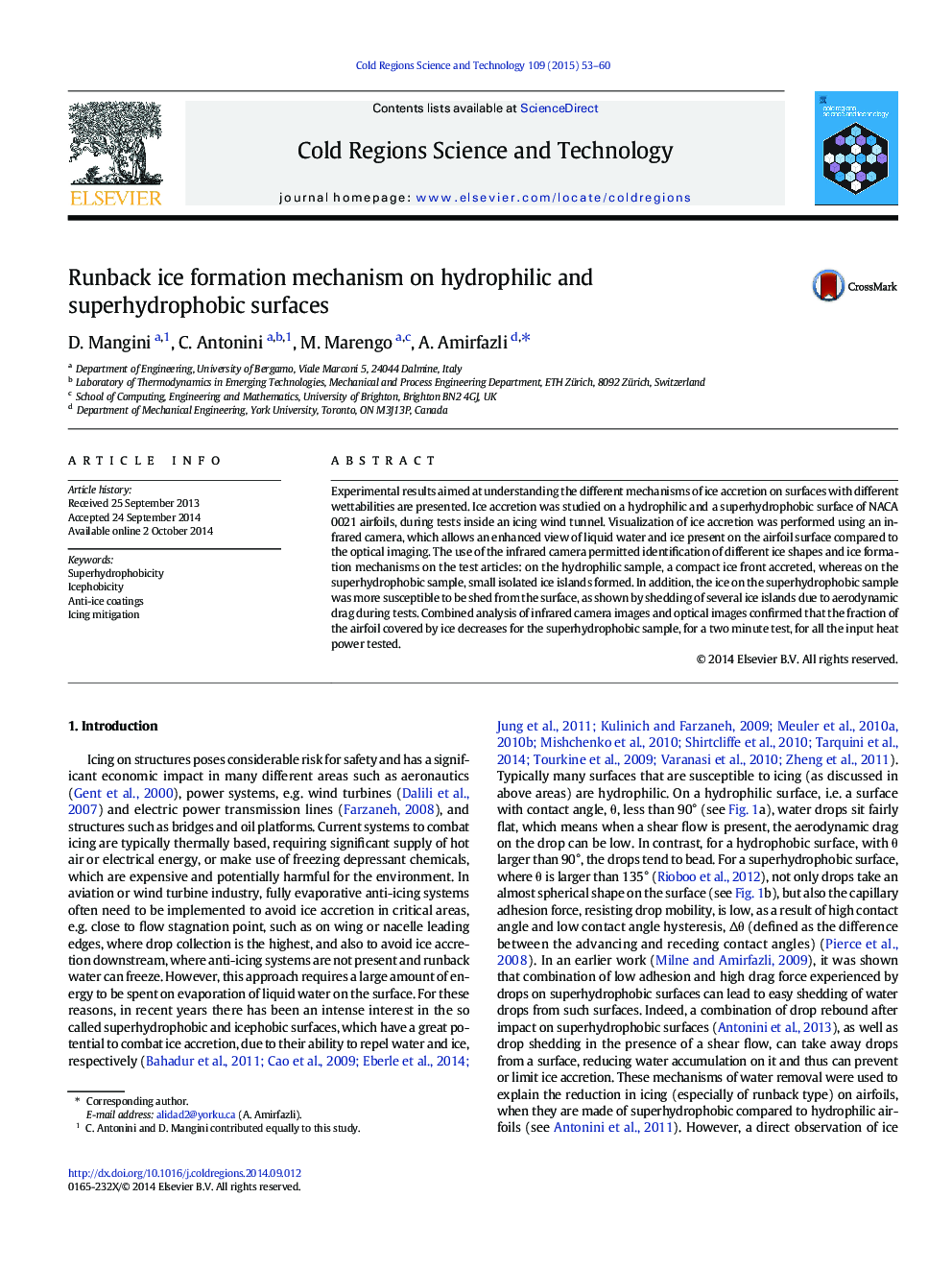| Article ID | Journal | Published Year | Pages | File Type |
|---|---|---|---|---|
| 6426912 | Cold Regions Science and Technology | 2015 | 8 Pages |
Abstract
Experimental results aimed at understanding the different mechanisms of ice accretion on surfaces with different wettabilities are presented. Ice accretion was studied on a hydrophilic and a superhydrophobic surface of NACA 0021 airfoils, during tests inside an icing wind tunnel. Visualization of ice accretion was performed using an infrared camera, which allows an enhanced view of liquid water and ice present on the airfoil surface compared to the optical imaging. The use of the infrared camera permitted identification of different ice shapes and ice formation mechanisms on the test articles: on the hydrophilic sample, a compact ice front accreted, whereas on the superhydrophobic sample, small isolated ice islands formed. In addition, the ice on the superhydrophobic sample was more susceptible to be shed from the surface, as shown by shedding of several ice islands due to aerodynamic drag during tests. Combined analysis of infrared camera images and optical images confirmed that the fraction of the airfoil covered by ice decreases for the superhydrophobic sample, for a two minute test, for all the input heat power tested.
Keywords
Related Topics
Physical Sciences and Engineering
Earth and Planetary Sciences
Earth and Planetary Sciences (General)
Authors
D. Mangini, C. Antonini, M. Marengo, A. Amirfazli,
